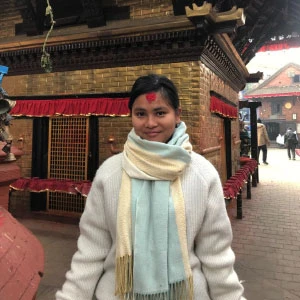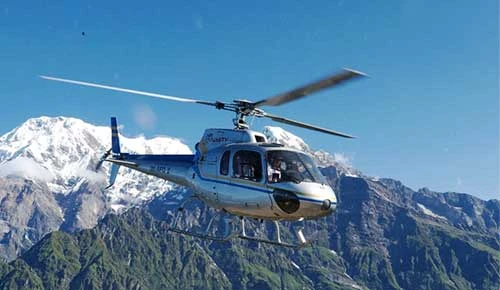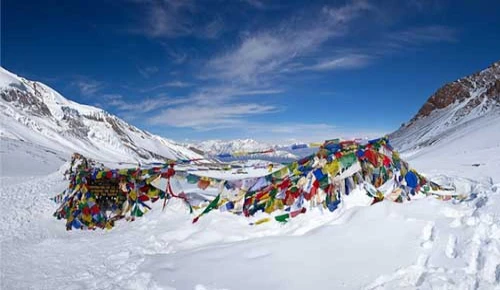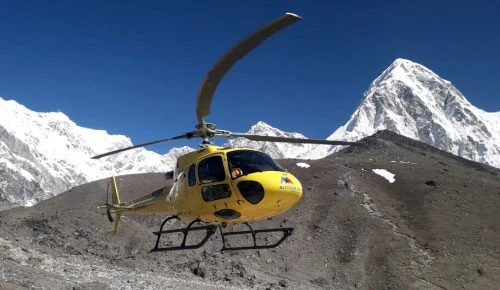Bhaktapur Durbar Square: A Nepali Living Museum
Entering Bhaktapur Durbar Square is as though one has returned to the past. The air is filled with the scent of incense, the old red bricks radiate in the sun, and every corner of the place tells stories of devotion, artistry, and history. Bhaktapur, 13 km east of Kathmandu, is called the city of devotees, and its heart is Durbar Square. This square is a UNESCO World Heritage Site, which means it is not only a tourist attraction site where the past, the present, and people live hand in hand with each other, but also the traditions spring to life, the culture speaks, and the past speaks very little.
While many travelers highlight Nepal for the Himalayas, Bhaktapur Durbar Square showcases a different kind of beauty. Instead of snow-capped mountains, you will see intricately carved wooden windows, golden gates, towering temples, and streets where people continue to live much like their ancestors did. This location offers a special blend of history, culture, art, and everyday life, creating a singularly memorable experience.
Table of Contents
Interesting Facts of Bhaktapur Durbar Square
Fact | Description |
UNESCO's World Heritage Site | Listed in 1979 as part of the Kathmandu Valley heritage sites. |
Once the Capital | Bhaktapur was the capital of the Malla Kingdom until the 15th century. |
55-Window Palace | Famous for its elaborately carved wooden windows, built by King Bhupatindra Malla. |
Lion Gate | Flanked by stone statues of lions, considered guardians of the palace. |
Golden Gate (Sun Dhoka) | Known as one of the most beautiful gates in the world, crafted with gilded metalwork. |
Nyatapola Temple | Tallest pagoda-style temple in Nepal, standing 30 meters high with five stories. |
Stone Guardians | Temples are protected by giant stone figures like elephants, wrestlers, and deities. |
Unique Newar Architecture | Square is filled with brick-paved courtyards, wooden windows, and terracotta tiles. |
Cultural Festivals | Biska Jatra (Nepali New Year) is the biggest festival celebrated here with massive chariot processions. |
City of Devotees & Artisans | Known for pottery, woodcarving, paubha painting, and traditional crafts. |
Historic Water Spouts | Stone taps and ponds still supply water, showcasing medieval engineering. |
Living Heritage | Unlike a museum, people still live, worship, and celebrate traditions inside the square. |
Earthquake Resilience | Despite major damage in the 1934 and 2015 earthquakes, the city has continuously restored its monuments. |
History of Bhaktapur Durbar Square
The history of Bhaktapur Durbar Square can make you appreciate the current state of this structure better. Bhaktapur had been the capital of Nepal in the Malla dynasty (12th-15th centuries). Malla kings loved art, culture, and architecture, their heritage, and their immortality in splendid palaces and temples left by them. The square served as the king's courtyard, a hub of activity where kings held sway, held festivals, and made crucial decisions.
Unlike other cities, Bhaktapur has managed to preserve its old-world charm. As you walk around the square, you can almost imagine the greatness of the occasion when the kings, courtiers, and artisans came together. Particularly in 2015, earthquakes caused damage to several monuments, prompting Bhaktapur to strive day and night to preserve its treasures. The fighting spirit of the city and the citizens themselves makes the square full of life, not only reminiscent of the past but also a tradition that is not dead yet.
Architecture
The open-air museum at Bhaktapur Durbar Square showcases the most outstanding examples of Newari art and architecture. Here are some highlights that you definitely should not miss:
55-Window Palace (Pachpanna Jhyale Durbar):
This palace is regarded as the centerpiece of the square. It is one of the most beautiful creations of craftsmanship in Nepal, consisting of 55 beautifully carved windows built in the 15th century and then renovated by King Bhupatindra Malla. The national art gallery now occupies the palace, which was once the royal palace.
Lu Dhowka.
The Golden Gate, the world's most beautiful and ornate gate, is at the 55-Window Palace entrance. It is gilded copper, overlaid with figures of gods, mythological beasts, and monsters, and it is a masterpiece of metalworking.
Nyatapola Temple
This five-story pagoda is Nepal's largest and one of its strongest temples. It was constructed in 1702, and it has experienced several earthquakes, which qualifies it in terms of Newari engineering. Devoted to Siddhi Lakshmi, a goddess of Hinduism, it gracefully towers over the square and is defended by massive stone statues on both sides of the staircase that leads to it.
Bhairavnath Temple
Another attraction is this temple, which is dedicated to Bhairav, who is a fierce form of the god of Destruction, Lord Shiva. Its three-story pagoda design and spiritual significance are why it's called that. The yards and stone sculptures each have their own charm. Bhaktapur Durbar Square is architectural heaven to any interested citizen.
Lifestyle and Festivals
Bhaktapur Durbar Square represents a vibrant community, more than just its monuments. The square historically served as a gathering place for locals, a marketplace, and a ritual place, and the locals continue to use it to this day. You will get to witness the craftsmen who are carving wood, pottery making clay, and women bearing offerings to shrines. The square is special because of this confluence of heritage and everyday life.
Festivals also make the square lively. The best known of them is Bisket Jatra, which takes place in April. This festival is observed to commemorate Nepali New Year; the festival is laden with energy, music, and a procession of chariots, and a tug-of-war is organized between the residents of various regions of the city. It is equally like watching history and tradition in action, a place to witness this festival in the heart of Durbar Square.
Other festivals like Indra Jatra and Dashain also add color and vibrancy to the city. To the tourists, attendance at one of the festivals provided at Bhaktapur is an event that one generates, as it presents itself with the best experience of jumping onto the face of Bhaktapur in its blissful purity of being exulted, pious, and congregate.
Entrance Fee/Visiting Details
The tourists who visit Bhaktapur Durbar Square pay an entry fee in a bid to conserve this cultural gem. The rates are at present:
- Foreigners: about NPR 1,800
- SAARC nationals, including India, are approximately NPR 500 per square unit.
- Chinese nationals: about NPR 500
- It is free to Nepal citizens and residents.
The square is open all day long, but you want to check it in the daytime, as everything is vivid and alive. Traveling from Kathmandu to Bhaktapur takes approximately 45 minutes by car, and you can choose to use a taxi, a bus, or join a guided tour.
It is best visited during the spring season (March to May) or the autumn (September to November) since the weather is amenable, the skies are clear, and festivals usually happen. Winters are cold and captivating, whereas summers are hot and at times rainy.
What Activities Can You Do in Bhaktapur Durbar Square?
Once you've had your fill of admiring the temples and palaces, the square offers even more enjoyment:
- Pottery Square: After a brief foot-trek, you will arrive at the potters' area, where you can observe them spinning clay using hand wheels. One can observe them during work and even make a mold of a clay ball.
- Juju Dhau: Bhaktapur is famous for delicious creamy and sweet yogurt called Juju Dhau, meaning "king of yogurt." It comes in soft boats and is offered in small clay pots; it is a must-have treat.
- Shopping: Inside the narrow lanes, there are numerous shops offering a variety of items, including wood carvings, Thangka paintings, pottery, and handicrafts. Shopping with artisans helps the community.
- Hopping coffee: you have rooftop cafes around the square to soak in a cup of tea or coffee as you enjoy a panoramic view of temples and daily life going on.
Tips for Visitors
Here are some tips to enhance your visit to Bhaktapur Durbar Square:
- Respect for local culture: The temples are still places of prayer, so one has to dress dignified and be careful taking pictures.
- Wear comfy shoes; you'll walk on cobblestones and up temple stairs.
- Early or Late: When not too many people are around and when the light is soft, go early in the morning or late in the afternoon.
- Rent a Local Guide: This is a helpful suggestion for gaining deeper insights into the temples and understanding the meanings behind various symbols.
- Bring cash: While local shops and vendors require Nepali Rupees, you can use cards at some places; however, be aware that not all will accept them.
Conclusion
Probably more than a historic site, Bhaktapur Durbar Square is a museum we walk and live in, with all its bricks, temples, and courtyards having some history behind them. As you stare at the 55-Window Palace, walk up the steps of Nyatapola Temple, taste the Juju Dhau, and just watch the locals go by in their day-to-day activities, you will literally feel emotional about the Nepal heritage surrounding you.
Coming here is just like taking a tour of a time capsule where the past and the present are walking side by side. It is an experience that any person visiting Nepal can expect to fall deeply in love with Bhaktapur, a day that will not allow you to ever forget it. It is not only sightseeing but also a sense of belonging to a culture that has managed to keep its beauty during hundreds of years.
We are eagerly anticipating your arrival in Bhaktapur! Explore the old palaces, eat the unique desserts that are known as Juju Dhau, and see history with eyes of your own in the square. Nepal Trek Adventure won’t take you there—it will bring you into the life of Bhaktapur.








